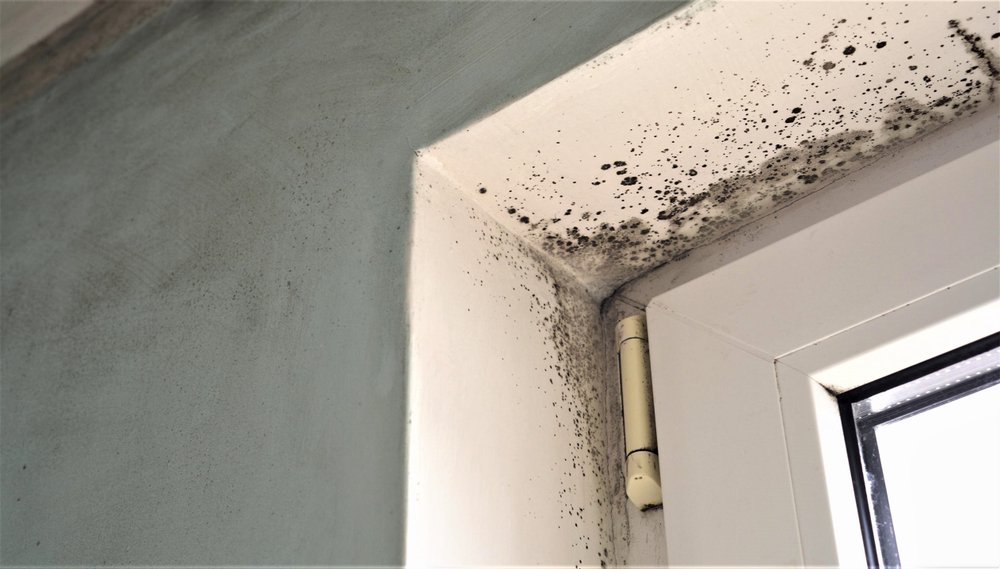Leave it to the Experts: Do’s and Don’ts of Mold Removal
No matter where you live or what type of structure you live in, mold accumulation can affect any home. When you notice mold appearing on your walls, floors, ceilings, or household objects, it is time to hire a mold remediation professional to alleviate the damage.
The Dry-Tek Environmental team serves homeowners in Maryland’s Eastern Shore region. We have handled countless mold remediation projects for those living along the coast, by the bay, and everywhere in between. Here are some tips from our time for preventing and removing mold from your home.
How Do I Prevent Moisture Accumulation?
Whether your upper levels, basement, garage, or crawlspace, any part of your house can be at risk for moisture accumulation if not ventilated properly. The best ways to reduce the chance of excess moisture in your home are:
- Turn a fan on or open a window whenever doing an activity where water vapor is present, such as hot showers or cooking.
- Check your air conditioning systems to ensure that all vents are operating properly.
- If there are areas that do not ventilate moisture well, keep a dehumidifier nearby and run it periodically until a professional can provide a more permanent solution.
- Check your home for any internal or external leaks. Look near openings in the ceiling, by windowsills, and near interior water sources like sinks and toilets, etc.
- Use an at-home moisture meter to check the levels in all parts of your home.
- If there is a pipe leak, call a plumber or other service provider and report it as soon as possible.
- If the moisture is coming from somewhere other than a pipe, call a moisture remediation solution provider to help identify and eliminate the problem.
What Types of Mold Are Found in Homes?
Most people are familiar with Stachybotrys Chartarum, or “black mold” as it is best known. This mold is known for its high toxicity and accumulation in places like bathrooms and basements. However, there are many other types of mold that could also occur in the house. These include but are not limited to the following:
- Alternaria – Mostly appears in damp, dimly-lit spaces. Often looks like many splotchy, black or charcoal-colored dots grouped together.
- Aspergillus – Common household mold that has an almost grainy, dotted appearance.
- Aureobasidium – Most commonly found on wooden objects like furniture, surfaces, window frames, etc. Often has a pink and black color.
- Chaetomium – Usually appears in water-damaged drywall and causes a musty or “old” smell.
- Cladosporium – Found in both cloth and hard surfaces like carpet and hardwoods. It often has a grayish color and slightly “fuzzy” appearance.
- Fusarium – This mold tends to appear in damp areas where carpet or fabric is present. It can spread in cold temperatures and has a brownish color.
- Penicillium – You will often find penicillium mold in places like insulation, furniture, and other places. It is most commonly a dark color and has a bumpy appearance.
- Stachybotrys Chartarum – As mentioned before, people often call this type of mold “black mold” and is both very toxic and dangerous. Breathing in these spores can cause a variety of health issues and you should call a professional to remove this mold immediately upon discovery.
- Serpula Lacrymans – This mold has a yellowish color and can be found on wooden surfaces. It is often a leading cause of dry rot and can have a devastating impact on your furniture or the structure of your home.
- Trichoderma – This mold produces toxins that can cause sinus irritation and trigger allergies. You will often find this type of mold in damp areas like carpeting, wallpaper, and other soft surfaces that have accumulated moisture. Trichoderma will have a dark, greenish color.
- Ulocladium – You will most commonly find ulocladium mold in areas that have experienced significant water damage. It often has a dark color and splotchy appearance.
What to Do if You Find Mold in Your Home
Keeping your health and safety in mind, we do not recommend touching mold or contaminated surfaces and staying as far away from the area as possible. Prolonged exposure can cause sickness or trigger allergies. Instead, you should consult with a local mold removal specialist immediately.
If you notice any respiratory or allergic reactions around the time you discovered mold in your home, be sure to contact a doctor and explain to them that you have been exposed. You will also want to call a professional mold tester and contact your homeowner’s insurance provider to see if they cover the test.
Once mold has been confirmed, contact a mold remediation specialist. Someone will come to your home, examine the mold damage, and recommend a solution.
Should You Attempt DIY Mold Removal?
Again, with your health and safety at the forefront, we do not recommend that you attempt to remove mold from your home yourself. It is always best to contact mold removal experts that are trained in safety best practices for mold remediation.
If you notice a small amount of mold starting to grow in a part of your home, you can consider using a mold-destroying cleaner and rag or paper towel. In this case, if you decide to clean the mold-contaminated area, we recommend that you wear disposable gloves and something to protect your mouth and nose. No matter the size of the mold, it is always best to have a professional handle this process.
Own a Moisture-Damaged Home in Maryland? Get Mold Removal from Dry-Tek.
Since 2006, Dry-Tek has provided residents of Maryland’s Eastern Shore with expert home mold removal and moisture protection services. We pride ourselves on creating solutions for your home that are made to last. If you would like to know more about how we can help you remove mold damage from your home, contact us anytime.


